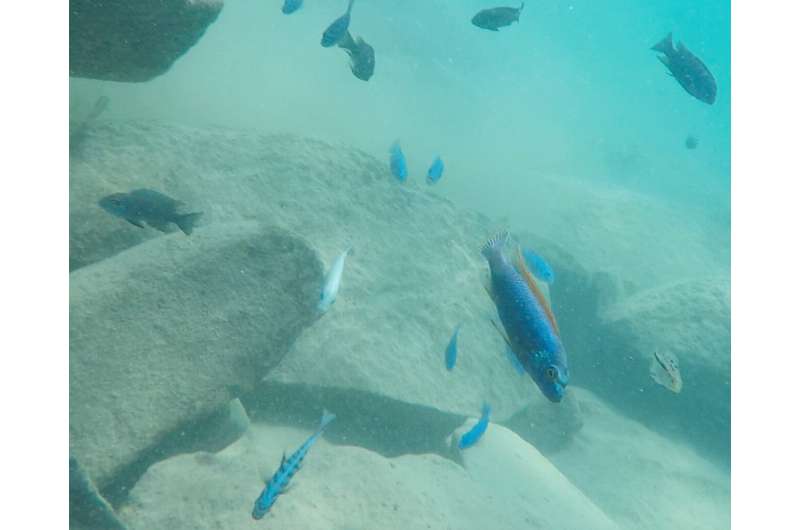New insights into phenotypic complexity and diversity among cichlids

Is evolution predictable? What are the mechanisms that allow different fish to respond to the same environmental challenge in slightly different ways? When the same jaw bones and muscles change to produce the same feeding behaviour, are the morphologies of these fish that evolved independently from one another modified in an identical way? What is the genetic basis for this kind of convergence? These are some of the questions that Dr. C. Darrin Hulsey and Professor Axel Meyer from the Department of Biology at the University of Konstanz and their international colleagues from the University of California in Los Angeles (USA), Tel Aviv University and the Inter-University Institute for Marine Sciences in Eilat (Israel) are trying to answer.
Their paper "Pleiotropic jaw morphology links the evolution of mechanical modularity and functional feeding convergence in Lake Malawi cichlids" is due for publication in the Proceedings of the Royal Society B on 20 February 2019.
Lake Malawi cichlids are extremely diverse in how they feed and what they eat. Darrin Hulsey, lead author on the study, says, "One thing about that diversity is that these groups have evolved to eat the same things repeatedly." While the Maylandia species and their close relatives have evolved to eat algae off of rocks, another major group commonly feeds on plankton, other fish or snails. However, one lineage in this second group, Protomelas taniolatus, has also evolved to graze algae. These two lineages have therefore independently evolved to exploit the abundant algal resources in Lake Malawi rapidly relative to most evolutionary timescales, i.e. in less time than the 2 million years this African lake has existed. This instance of repeated evolution holds particular potential for the study of evolution: "The fact that there are so many species that exhibit so many forms and the fact that this ecological specialization has evolved again and again allows us to ask questions about evolution in a more statistically rigorous way," says Hulsey.
To learn more about the evolution of these converging feeding habits, the researchers studied the anterior jaws of the cichlids, which are characterised by a complex mechanism often found in human-engineered objects such as umbrellas or the pistons of steam engines. This mechanical system is known as a "four-bar linkage" and allows the fish to protrude their jaws to bite off algae. Jaws and teeth are particularly interesting to evolutionary biologists because they have a clear connection to ecology, whereas other changes in the phenotype of an organism—such as changing colours—are much less easy to interpret.
Building evolutionary trees that use large parts of the fish genome, the researchers found out that the bones that make up cichlid jaws can achieve this feeding specialization in multiple ways, a phenomenon that is known as many-to-one-mapping. "Ecologically, both groups of fish are doing the same things. The way that they push their jaws out seem to be very similar. The underlying mechanical aspects of how the bones work are similar. But there are very different morphologies of the bones that underlie these feeding abilities." The fact that two cichlid species have converged on similar jaw protrusion abilities as well as four-bar linkage mechanics, but have evolved these similarities via non-convergent four-bar morphologies suggests that very different morphologies might often translate into overlooked similarities in ecology. Phenotypic complexity could thus fundamentally influence both how organisms diversify and how we understand this diversity.
This line of research also has wider implications. As Hulsey points out, Lake Malawi is the most species-rich lake in the world. But due to hybridization, species are collapsing. One of his goals is to understand how the collapse of species generates diversity in the long term. Another is to study convergence as a way of predicting evolution. "If we can understand on the genetic level how differences as well as complex convergence come about, we may be able to better predict if and when these things will happen."
More information: Pleiotropic Jaw Morphology Links the Evolution of Mechanical Modularity and Functional Feeding Convergence in Lake Malawi Cichlids, Proceedings of the Royal Society B: Biological Sciences (2019). DOI: 10.1098/rspb.2018.2358
Journal information: Proceedings of the Royal Society B
Provided by University of Konstanz



















